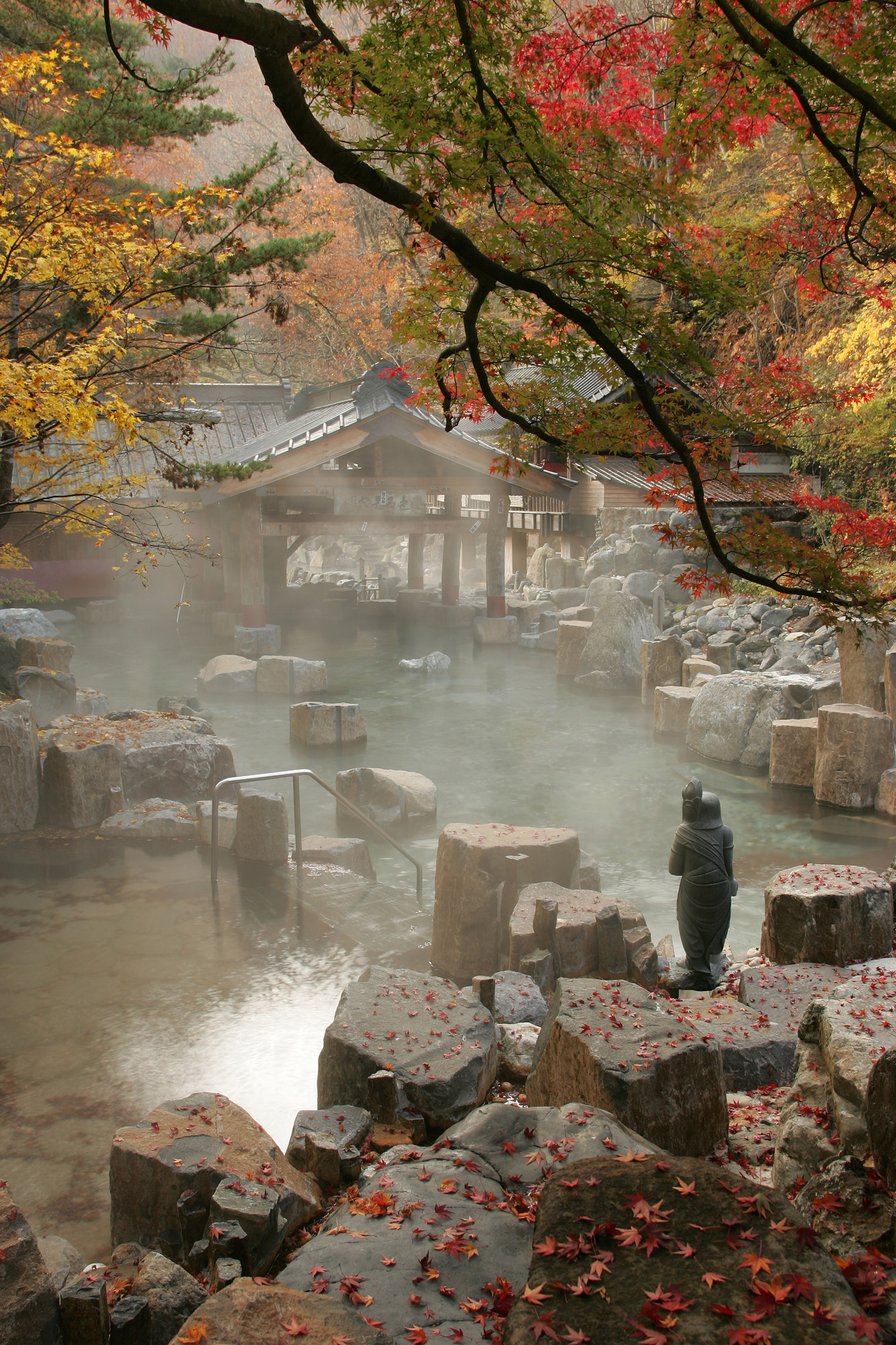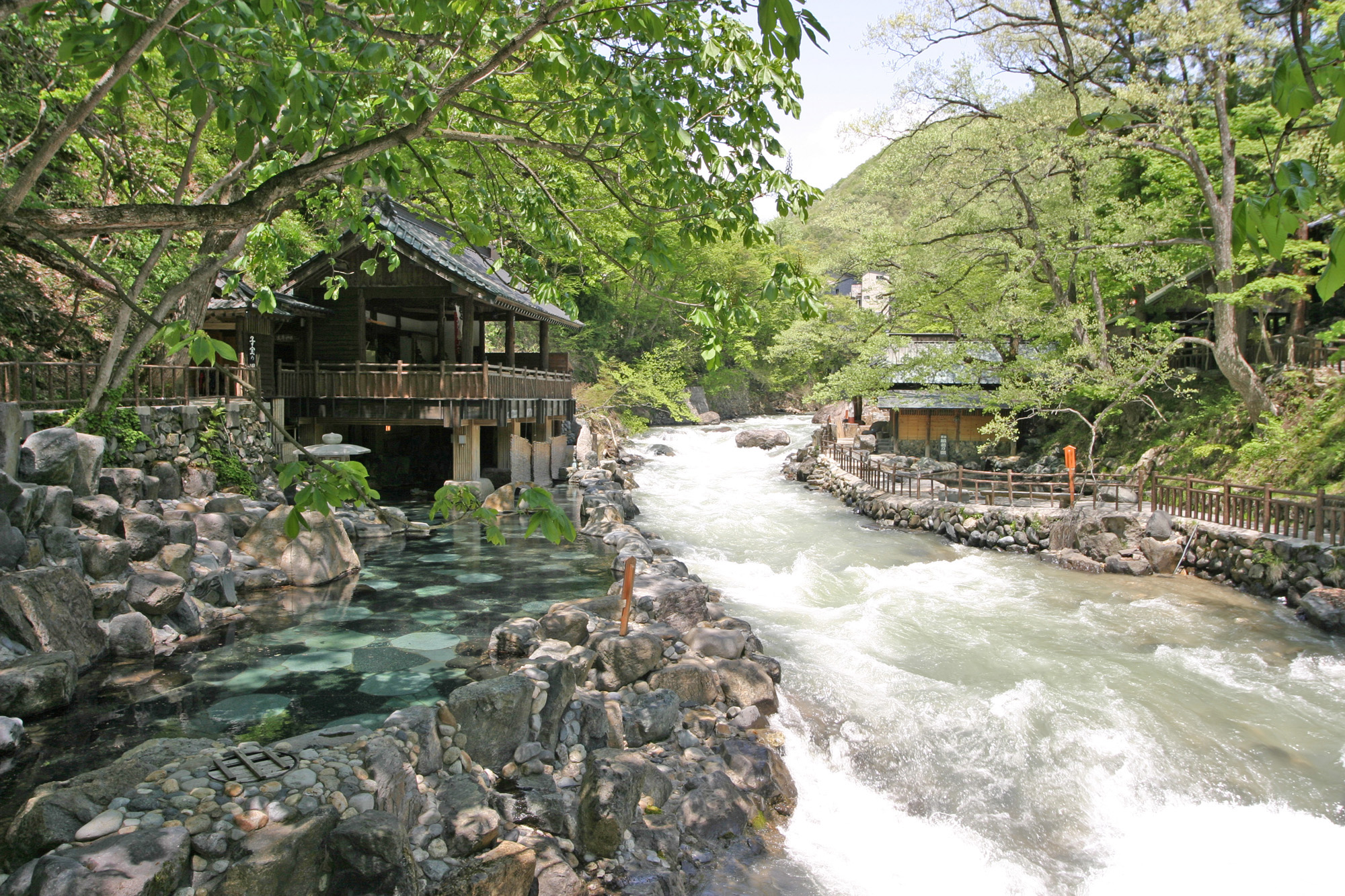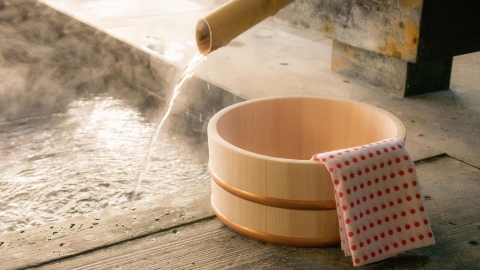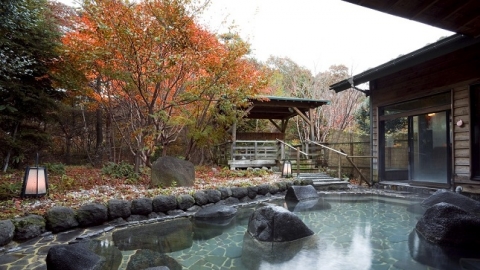For more than 1,000 years, natural hot springs – known as onsen – have been an essential part of Japanese life, cleansing both body and soul. There are more than 3,000 onsen in Japan. Rich in minerals and sourced directly from the 25,000 hot springs bubbling beneath the surface of the geothermal archipelago, onsen offer a personal and communal experience of tranquility, as families, friends and neighbors shed their clothes and step into the steaming waters together. From smart inner-city spas to oceanside caves, each Japanese onsen has its own charm – but some are in a special location unlike any other.

Located beside the Kurobe River deep in the Japanese Alps, Japan's most remote onsen takes two days to reach.
Said to be the most remote onsen in Japan, the two-day hike to Takamagahara (literally, “high plains of heaven”) is considered a pilgrimage for the most extreme bathers. To soak in the healing waters of Chubu-Sangaku National Park, hikers and onsen enthusiasts must trek over 40km through forests and along rivers, climb steep slopes and sleep in isolated mountain huts. The route is not for the faint of heart: it is a true expedition, requiring physical stamina as well as a deep understanding of the unpredictable mountain climate.
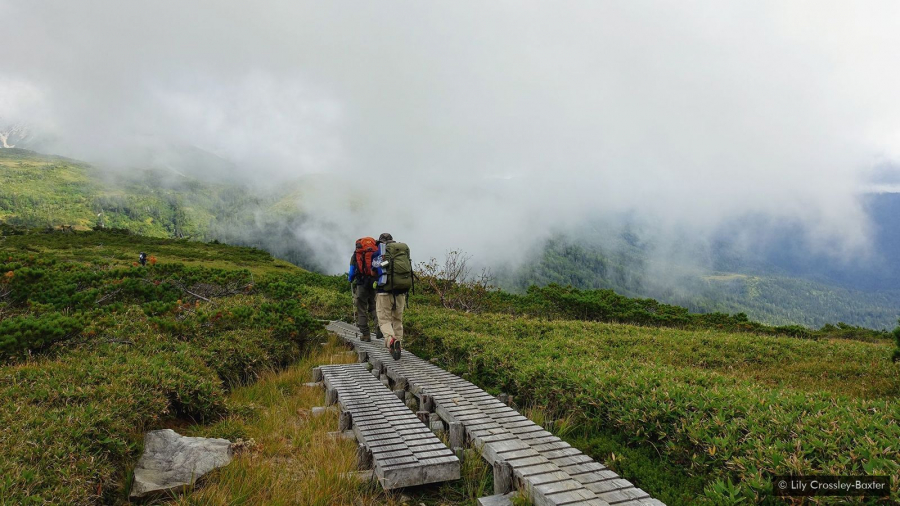
Those who want to soak in the health-restoring waters of Takamagahara have to walk more than 40 km
The reward is a modest cluster of baths deep in a rocky valley. While the landscape, minerals, and design of Japan’s onsen are all unique, each shares an intangible connection with nature. In an increasingly urbanized world, it’s no surprise that outdoor baths, called rotenburo, are the most sought-after among visitors, offering panoramic views of the starry sky and a cooling breeze as you recline in the mineral-rich waters. Far from civilization, surrounded by mountain greenery and the sound of trickling water, Takamagahara is the pinnacle of the rotenburo outdoor hot spring experience.
While a four-day round-trip hike may seem extreme, Japan’s pilgrimage tradition dates back centuries—a perfect example of the journey equaling, and surpassing, the destination. Once visited by Edo-era pilgrims, the mountains surrounding Takamagahara have since been deified and considered a manifestation of kami, the Japanese Shinto gods.
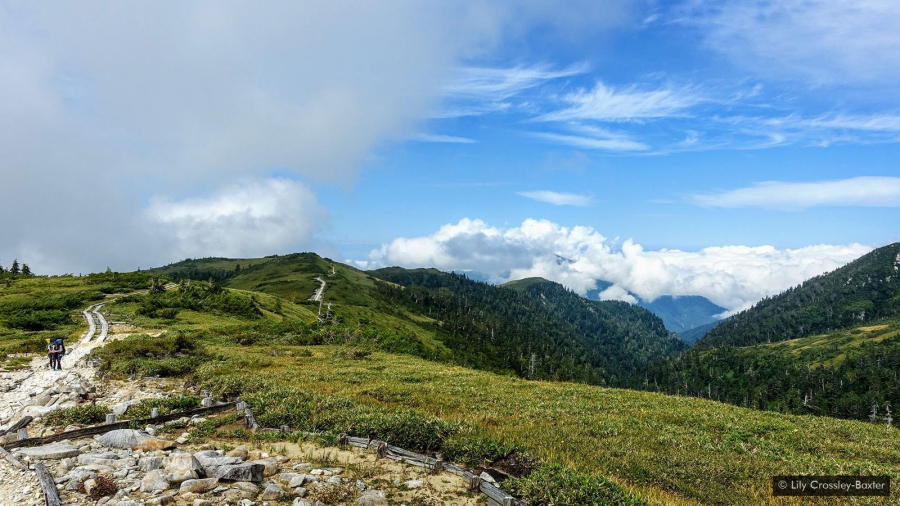
Phone reception was poor along the trail and the weather was constantly changing.
As the heat of summer fades, a long-distance hike seems like the perfect introduction to a new season of hot spring bathing. To reach this wild, remote mountainside, simply take a fast overnight train to Toyama and board a winding two-hour bus ride to the trailhead near the small village of Oritate early the next morning.
On the trail leading to Takamagahara, the mist shrouds the hill, completely transforming the landscape, and the phone signal is lost. The stone path uphill is soon replaced by wooden planks to protect the alpine vegetation. The weathered planks are unusual but impressive, winding down the slopes into the distance, drawing the eye. The alpine grass is dotted with patches of vibrant color, the last of the alpine flowers.
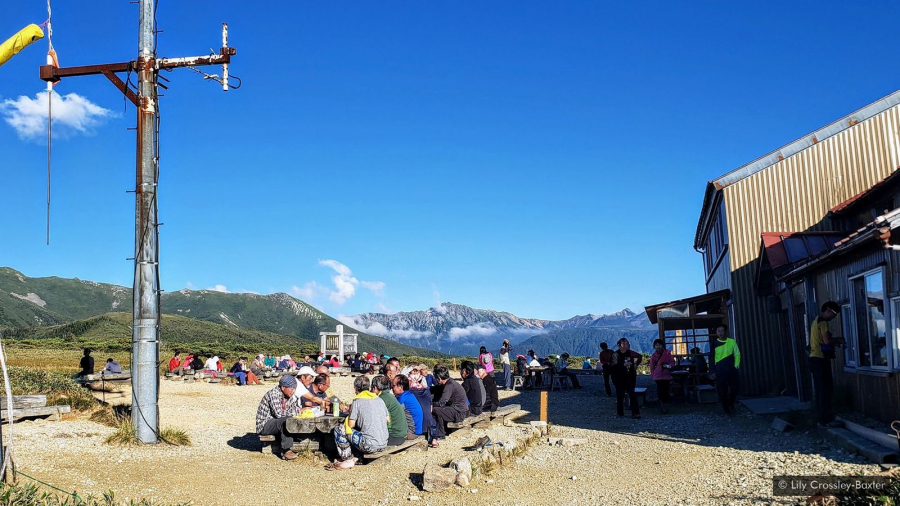
A series of remote mountain huts, where hikers can eat and sleep, are scattered along the trail.
Mountain huts, called yamagoya, are often closed for the winter. These huts – delivered monthly by helicopter and managed by on-site staff – allow hikers to avoid lugging heavy camping gear by providing simple sleeping quarters and home-cooked meals. As the only connection to the outside world, the huts are a vital network in these remote mountain ranges, providing detailed forecasts and route suggestions based on weather patterns and tracking hikers to ensure no one gets lost.
The first yamagoya hut for resting is Tarodaira, and the second is Yakushizawa, 12 km away. The huts are still sturdy despite the wear and tear of years of use. Lined with straw mats and neatly folded blankets, the yamagoya huts are very simple. While standing here to refresh, visitors can look down at the Kurobe River below and the apparently tireless hikers fishing along the riverbank.
At dinner, crispy tempura and bowls of rice steamed from a central pot are distributed to each guest. Soup from a communal urn and tea complete the meal, followed by toasts to a delicious meal. Guests sit shoulder to shoulder, the "kanpai" (cheers) are said, and beer glasses are raised and clinked together in a communal ritual.
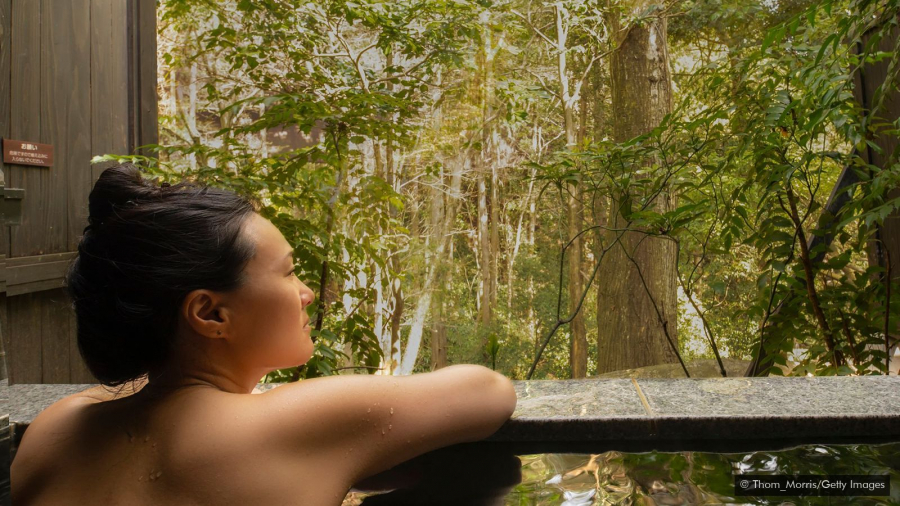
The Japanese concept of hadaka no tsukiai (collective nakedness) is said to remove barriers and strengthen relationships.
One of the joys of a public onsen experience is the opportunity to bond deeply with friends, family or colleagues. Soaking side by side, bathers can forget the hierarchical relationships of Japanese culture and talk openly in the steam of the hot springs. This concept, known as hadaka no tsukiai (collective nakedness), removes barriers and fosters relationships that would otherwise be impossible without the intimacy of communal bathing. When everyone is naked, everyone is equal. In fact, a peaceful onsen atmosphere relies on a delicate balance of unwritten social rules. From removing shoes to cleansing in individual baths, the ritual soon becomes second nature – an escape from the humdrum of everyday life.
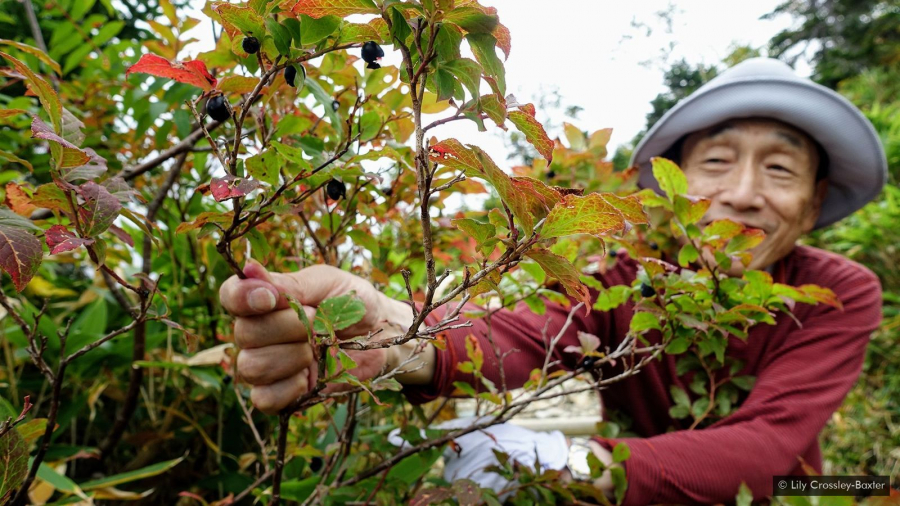
Mountain flowers and wild blueberries mark the path to the hot springs
Leaving Yakushizawa, travelers make their way along wooden planks toward the Kumanodaira plateau and its famous views of the distant peaks. Climbing stairs and crossing narrow bridges, hikers eventually reach the simple Takamagahara hut and see the onsen signs. Just 20 minutes down a stone path toward the famous hot spring, the smell of hot sulfur—an inescapable but pleasant smell for onsen enthusiasts—is the first sign of this hidden hot spring.
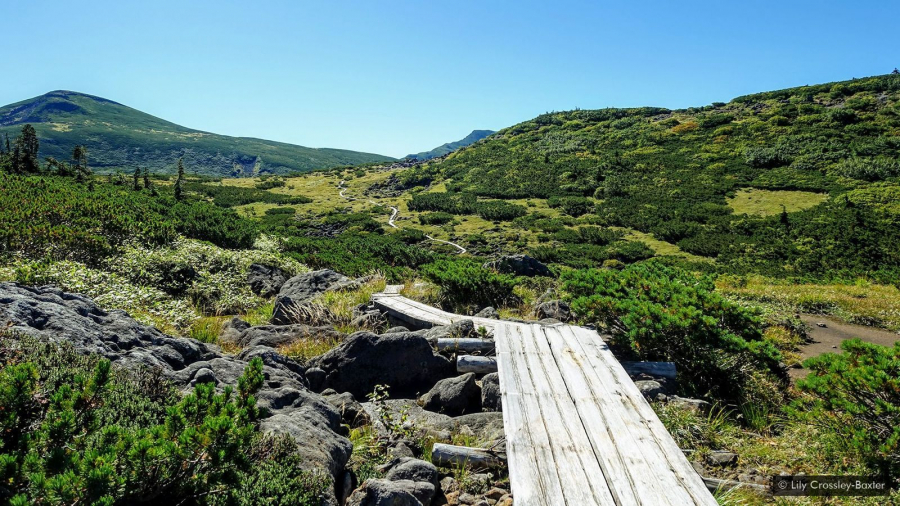
Wooden planks protect alpine flora and provide easy access for hikers
While Takamagahara’s two gender-segregated baths are shielded by simple bamboo walls, a third, mixed-gender bath, is located outdoors for all to see. These mixed-gender baths, known as konyoku, were common in Japan until the 19th century, but now rural onsen are the last to continue the tradition.
Stepping into the crystal clear water, hours of walking suddenly disappear as one can “be one with nature” and admire the rocky peaks in the distance. There is a Japanese phrase called “kachou fuugetsu”. Although it literally translates to “flowers, birds, wind, moon,” it represents the importance of experiencing the beauty of nature and taking this opportunity to learn about oneself.

Far from civilization, surrounded by mountain trees and the sound of trickling water, Takamagahara is the pinnacle of the outdoor hot spring experience
If you can hike to Takamagahara, why not try the hadaka no tsukiai experience, to enjoy the essence of communal onsen bliss on the high plains of paradise in Japan?





